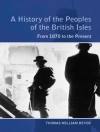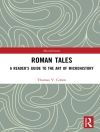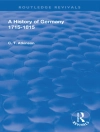Saudi Arabia: oil-rich, devoutly Muslim, and a vital ally
To many in the West, Saudi Arabia is easy to criticize. It is the birthplace of Osama bin Laden and fifteen of the nineteen 9/11 hijackers. Saudi women are not permitted to drive, work with men, or travel without a man’s permission. Prior to 9/11, the Saudis sent millions of dollars abroad to schools that taught Muslim extremism and to charities that turned out to be fronts for al-Qaeda.
In Prophets and Princes, a highly respected scholar who has lived in Saudi Arabia contends that despite these serious shortcomings, the kingdom is still America’s most important ally in the Middle East, a voice for moderation toward Israel, and a nation with a surprising ability to make many of the economic and cultural changes necessary to adjust to modern realities.
Author Mark Weston offers an objective and balanced history of the only nation on earth named after its ruling family. Drawing on interviews with many Saudi men and women, Weston portrays a complex society in which sixty percent of Saudi Arabia’s university students are women, and citizens who seek a constitutional monarchy can petition the king without fear of reprisal.
Filled with new and underreported information about the most controversial aspects of life in Saudi Arabia, Prophets and Princes is a must-read for anyone interested in the Middle East, oil, Islam, or the war on terror..
Table of Content
Author’s Note.
Foreword by Wyche Fowler Jr.
Cities and Regions of Saudi Arabia Today.
The Men of the Al-Saud Family.
Introduction.
Part One: THE BIRTH OF ISLAM IN THE SEVENTH CENTURY.
1 Muhammad: Islam’s Prophet.
2 The Successors Who Preserved the Faith and Began the Conquests: Abu Bakr and Umar (632-644).
3 Expansion, Civil War, and the Sunni-Shi’ite Split: Uthman and Ali (644-661).
4 The Beginning of Monarchy: Muawiya, the Fifth Caliph, His Son Yazid, and the Martyrdom of Hussein (661-683).
Part Two: THE FIRST AND SECOND SAUDI STATES (1744-1887).
5 The Founder of Wahhabism: Muhammad ibn Abdul Wahhab (1703-1792).
6 Nineteenth-Century Saudi Arabia (1792-1887).
Part Three: THE CREATION OF MODERN SAUDI ARABIA: THE LIFE OF KING ABDUL AZIZ (1876-1953).
7 Exile and Return (1876-1902).
8 Expanding the Kingdom (1902-1926).
9 Powerful but Poor (1926-1945).
10 The Influx of Oil Money (1945-1953).
Part Four: OIL BRINGS POWER: THE LIFE OF KING FAISAL (1905-1975).
11 The Young Prince and Foreign Minister (1905-1953).
12 The Struggle between the Brothers (1953-1964).
13 The King in Full Control (1964-1972).
14 Oil as Political Power (1973-1975).
Part Five: MODERN SAUDI ARABIA (1975-2001).
15 The Boom Years of King Khalid (1975-1982).
16 The Lean Years of King Fahad (1982-1990).
17 The Persian Gulf War (1990-1991).
18 The Rise of Militant Fundamentalism (1991-1996).
19 Abdullah Begins Reform, bin Laden Steps Up Terror (1996-August 2001).
Part Six: SAUDI ARABIA SINCE 9/11.
20 Fighting Terror, Fostering Reform (2001-2007).
21 A New Oil Boom, a New Business Climate (2003-).
22 Abdullah Becomes King, Iran Becomes a Threat (2005-).
Conclusion.
Acknowledgments.
Notes.
Selected Bibliography.
Index.
Photo gallery.












